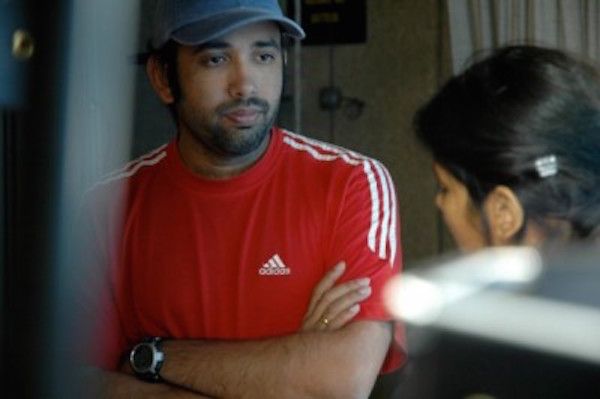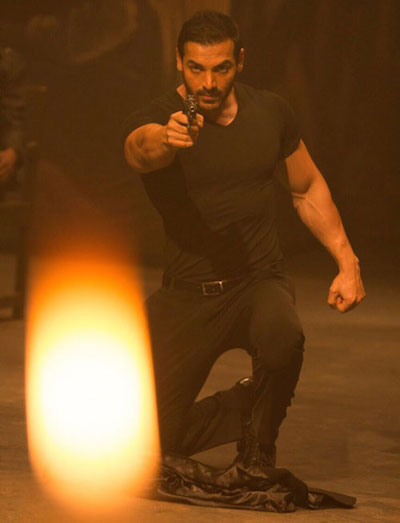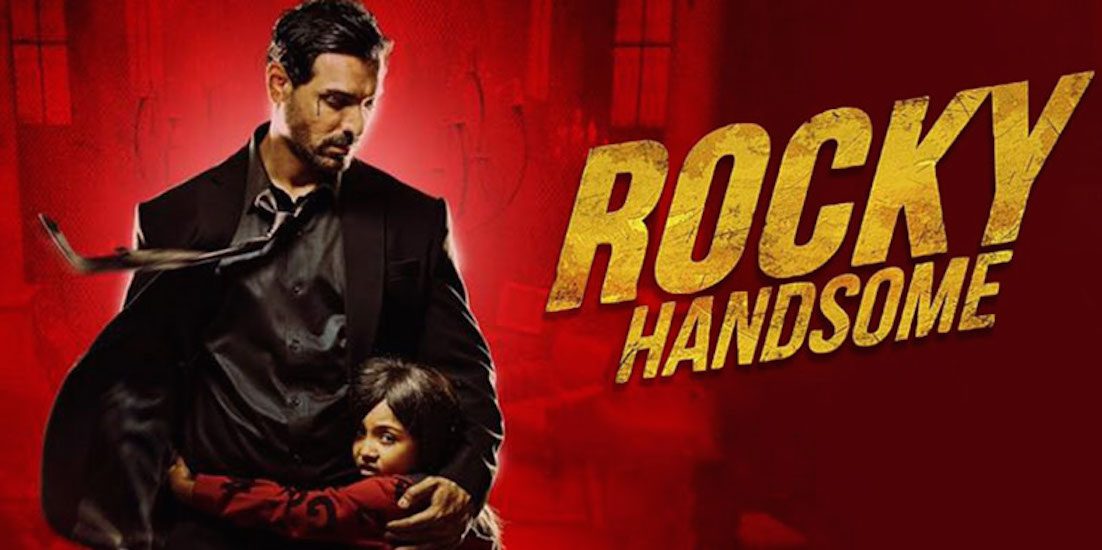I like action films that have an emotional connect – Shanker Raman
One of the biggest yet seldom spoken about heroes of an action film is the cinematographer. Good camera work can make or break a film of this genre. We got an opportunity to see this world through cinematographer Shanker Raman’s lens, who believes that by connecting emotion with action, Rocky Handsome is not just about fighting but about the human condition and emotion.

Shanker Raman
What was the visual treatment adopted for the film?
It’s an official remake of a Korean film. I am a big fan of action films, I love the genre, Chinese martial arts, even Japanese and the Kung Fu genre of action. I like action films that have an emotional connect with the character, it’s not just action in terms of fighting, it’s an expression of the human condition or human emotion.
What I liked about this film is that it had the scope of being adapted in the Indian context, for people who love emotions and love being moved by something on screen. So the original script had that potential, but it wasn’t quite there.
So when I spoke to Nishi (Nishikant Kamat, Director), we basically created a palette that would work for the film. The film is set in Goa and he wanted to show Goa that no one has seen or at least not seen in the last 15 years. We were looking at a very dark and gritty Goa where you see very few regular people but a stylized bunch of guys who are living in a world of crime and alternate reality. And there is one guy who is stuck in the middle of all of it. The palette was the most exciting thing for me to create. We could have easily taken the Korean palette and put it here, but it wouldn’t have worked. So that is essentially what I got to create; I didn’t know how I was going to do it, but it evolved as we went along. And that’s how the treatment came up – staying with the emotional connect, making sure that people understand why the action is there, why they are fighting and hitting each other, is it for titillation or is to because of an emotional connect.
READ: ACTION LOOKS BEAUTIFUL WHEN BACKED BY EMOTIONS – JOHN ABRAHAM
Were there any visual references given by director Nishikant Kamat or did you do any referencing yourself?
We didn’t do any referencing as such. We talked about color as Nishikant wanted a lot of saturated colors in the film. Then Sukant (Sukant Panigrahy, Production Designer), Nishi and I worked out the look of the film. We looked at various architectural pictures of Portuguese houses, lanes and the colors they use and how would they appear at night. And emotionally, it’s a dark film so we had to figure how to create that in an authentic space, because you may not have met characters like that in your life, but how do you make it believable or convincing outside of your standard routine of showing stereotype figures. We also spoke about light and shade and costumes – since everyone was mostly going to wear suits. So I said that we should completely avoid white in the film, or hardly use any white, which in itself makes it a very strong palette.
What kind of action does the film have and how have you captured it?
We used all kinds of rigs and devices to shoot it, but mostly the action is handheld. A lot of it is on steadicam as well, especially most of the the climax portions. But it was always a combination of handheld, steadicam and dolly. But my approach to action is very simple. There is a certain logic to the action, why are the people moving the way they are moving and what prompts the action and everything that leads up to it. So the action directors – Sunil Rodriques, Kaecha Kampakdee from Thailand and I had methodically broken down the action scenes to the T. Every shot was designed and choreographed and pre-shot and pre-visualized. There was very little scope to go wrong. My approach to action was really just pre-visualizing and understanding what the action is. They had a very specific school of thought that they were coming from, which had a mix of hand to hand combat with a lot of knife fighting. This was basically what we would discuss, whether it was gunfights or hand fights and it was all broken down to precision.
READ: IN THE MOOD FOR ACTION? TAKE A LOOK AT PANDOLIN’S TOP 10 ACTION FILMS
Tell us about the camera and lens that you’ve used?
We shot on the Alexa HD with Cooke S4/i lenses.
And what was the approach to the overall framing ?
It has a very liberal use of wide shots and close-ups.The film has got a great mix of lensing and a lot of energy in the cinematography as it’s a fast paced film.

John Abraham in Rocky Handsome
How much of the film has been shot on sets versus real locations?
I would say that mostly all the interiors are sets and some of the exteriors are in studio spaces, but otherwise they are all on location.
What was your lighting design for indoor scenes and exterior locations?
Personally for me, almost everything in cinematography is art direction, so the first thing to do is art direct and pay attention to it. If I can art direct then I already have the contrasts, the color, the tones and the setting. Then lighting is not too difficult because I don’t have to make it look a certain way, I just have to enhance the art. So that’s how I approach any work, if the art and costume is convincing then it’s a pretty straight forward process for me. For example, if I know what the setting is like, for example, if it’s a gangster’s hideout, there are a million ways in which it can be dressed up, but why are the items that are there, actually there? What is the function that they provide? I thought about the logic and rationale of things – why are they wearing what they are wearing and what kind of people are they. If you go into the heart of what creates these characters and dress it up, then lighting is straight forward.
Since John Abraham was the producer and actor, were there any inputs from him as well?
There are always inputs if you are listening. The way I see it is that we had an amazingly well-oiled setup and we were extremely collaborative. Anything that anyone said, was an input for me. And John was extremely interactive and well prepped. We used to have conversations on how to approach the scenes, not in a way where we are sitting and talking for hours but we would be very interactive. It wasn’t about ‘do this and don’t do that’, it was more about the feel, the space and how he could move within it.
Hoow was the experience of working with a child actor?
Diya was an absolute darling. She knew all her lines and was spot on. Diya was incredibly patient for a child of that age. I am a parent and know how children can be very agitated if they are not getting something right or if it’s taking too long. But she was a thorough professional and a dream to work with.
READ: BOLLYWOOD’S LIFELONG LOVE AFFAIR WITH GOA
Lastly, what were the challenges encountered during the shoot?
One of the main challenges was maintaining the rain continuity and to make the rain look convincing. This film is essentially set in the monsoons, so every time the sun would come out, controlling it and making the sequence look believable and moody was a challenge. Also we had built a lot of sets and a had lot of VFX work like background plates and extensions. So it was challenging for me to shoot the material that would support our post production later on. We had to keep examining our choices so that we don’t lose out in the end. For example, the background plates needed to be shot in Goa because the film is set in Goa but we were shooting in Ramoji Film City in Hyderabad. So to be able to ensure that the plates would match with what we are building in the foreground, was also a challenge. It was challenging in terms of making it believable.



